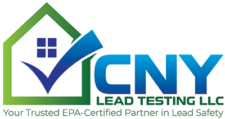Lead Paint Risk Assessment
Lead Paint Risk Assessment – includes outside soil sampling and inside visual – swipe samples (pricing would be quoted based on number sample – size of property, does it include exterior and water
An Environmental Protection Agency (EPA) risk assessment inspection for lead paint is a comprehensive evaluation conducted by a certified lead-based paint inspector or risk assessor to assess and quantify the potential risks associated with lead-based paint hazards in residential or child-occupied facilities (such as homes, daycares, or schools). The primary goal of this inspection is to identify and assess lead-based paint hazards and determine the appropriate actions needed to mitigate or eliminate those hazards. Below are the key components and steps involved in an EPA risk assessment inspection for lead paint:
- Qualified Inspector: The risk assessment inspection must be performed by an EPA-certified lead-based paint inspector or risk assessor. These individuals are trained and certified to conduct thorough evaluations and risk assessments related to lead-based paint.
- Site Assessment: The inspector assesses the entire property, both inside and outside, to identify potential sources of lead-based paint hazards. This includes examining painted surfaces, checking for deteriorated or damaged paint, and inspecting areas where friction or impact could create lead dust or chips.
- Sampling: The inspector collects samples of paint, dust, and soil from various locations throughout the property. These samples are sent to a qualified laboratory for analysis to determine lead content.
- Risk Assessment Model: The risk assessor uses a risk assessment model, such as the EPA’s Integrated Exposure Uptake Biokinetic (IEUBK) model for children or the Adult Lead Methodology (ALM), to estimate potential lead exposure and associated health risks for occupants, especially children.
- Evaluation of Lead Hazards: The inspector evaluates the condition of painted surfaces, identifies areas with lead hazards (such as deteriorated paint), and assesses the potential for lead dust or soil contamination. The risk assessor also considers factors like occupancy patterns, ages of occupants, and the presence of pregnant women or young children.
- Report: The inspector provides a detailed report that includes the results of the risk assessment, laboratory analysis of samples, and recommendations for mitigating or eliminating lead-based paint hazards. The report may also include information on interim control measures to reduce immediate risks, especially if abatement is not immediately feasible.
- Mitigation or Abatement Recommendations: Based on the findings, the risk assessor recommends specific actions to address identified lead hazards. This may include recommendations for lead hazard reduction, interim controls, or full abatement, depending on the severity of the hazards and the safety of the occupants.
- Occupant Education: The risk assessor may provide education to the property owner, tenant, or occupants about the risks of lead exposure and measures they can take to reduce exposure.
- Follow-Up: Depending on the findings and recommendations, follow-up inspections may be necessary to ensure that the lead hazard reduction or abatement work has been completed successfully and that the property is safe for occupancy.
It’s important to note that lead-based paint risk assessments are critical for protecting the health of occupants, particularly children and pregnant women, who are most vulnerable to the harmful effects of lead exposure. Property owners and managers should work closely with certified inspectors and follow all EPA and local regulations to ensure compliance with lead safety standards.
